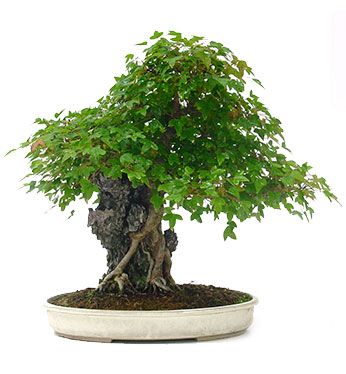Characteristics
Tree of deciduous leaves and fast growth. It is valued for its small and yellow leaves and its bark which flakes off.
Location
In a Mediterranean climate place outside, with plenty of sun during the whole year. To avoid burn marks on the points of leaves it should be protected against the strong noon sun in summer. In colder climates protect against freezing.
Watering
Abundant in summer and moderate in spring. It’s convenient to pulverise the leaves with water during summertime because it needs air moisture.
Fertilization
In spring and autumn.
Re-potting
Every two years, at the beginning of sprouting in spring.
Substrate
100% Akadama or mixed with 20% of volcanic clay.
Pruning and pinching
Pruning
At the beginning of spring.
Pinching
Done with the tips of your fingers. Nip the new bud and leave only the first two leaves at the point of the branch. Nipping can be done during the whole spring.
Wiring
Spring and autumn.
Curiosities
In Japan it’s one of the most characteristic trees used as a bonsai. It’s one of the most resistant trees to all the techniques of bonsai and is also perfectly adapted to our Mediterranean climate. It’s one of the trees which you can model in a sekijoju style (roots which embrace a rock)

